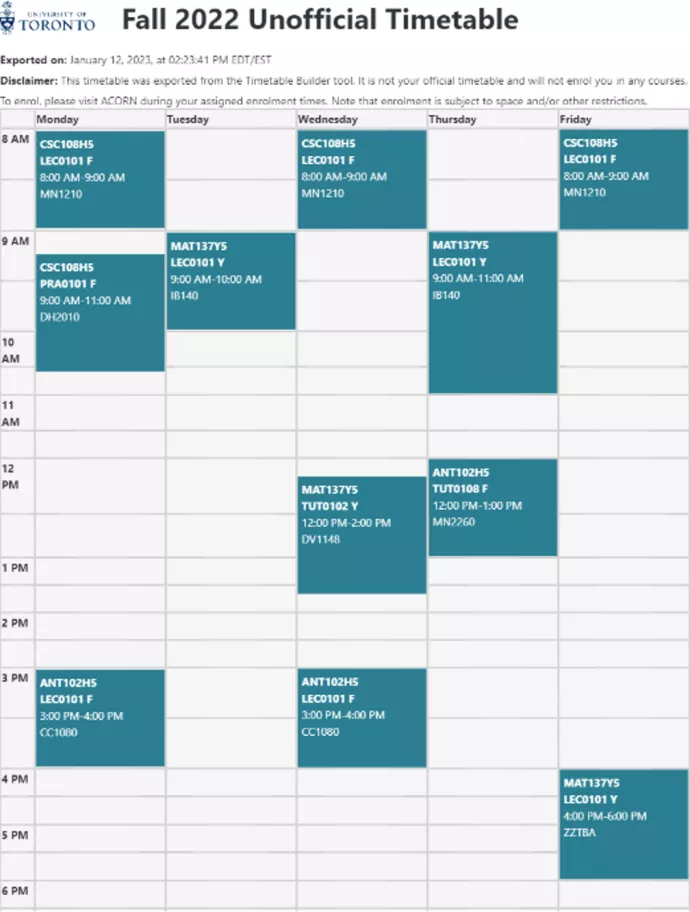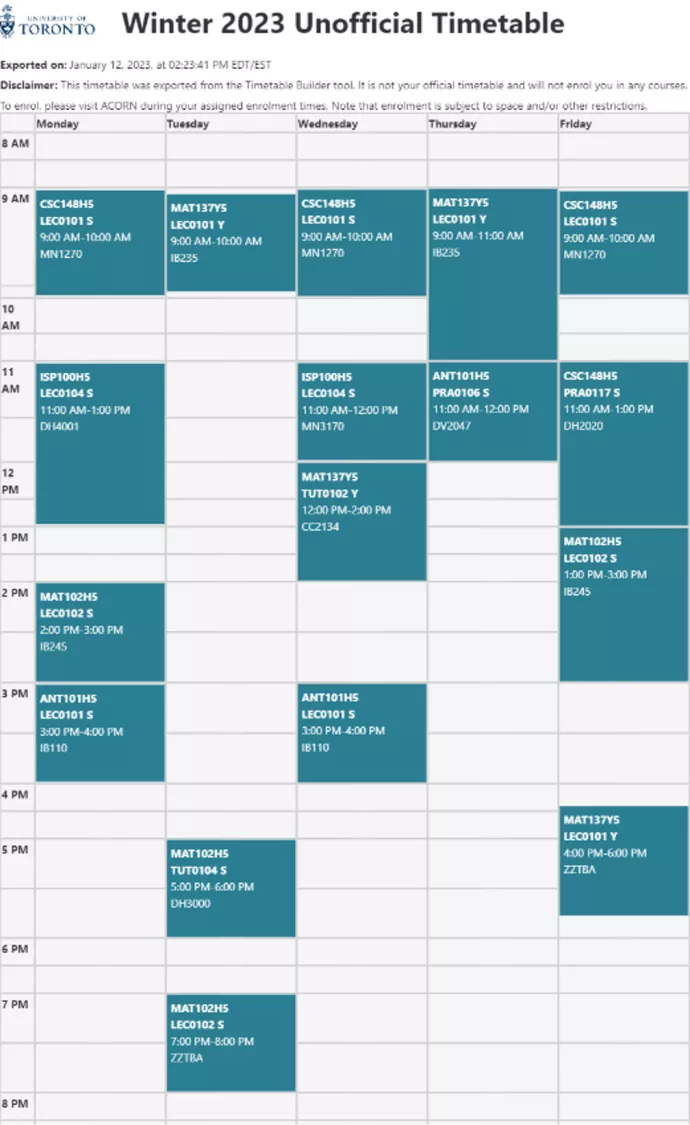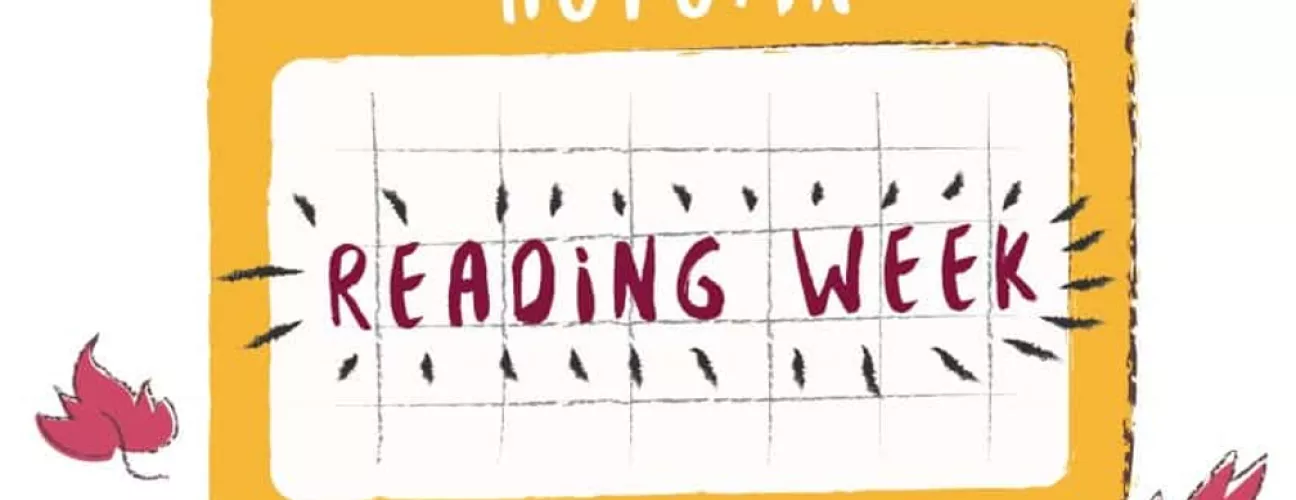
Sample Semester Schedule
What does a typical yearly schedule look like for a high school student vs. a university student?
For most high school students, a typical school year consists of 2 semesters (~5 months in length each) and 1 summer break (~2 months in length) with the first semester lasting from September to January, second semester from February to June, and summer break from July to August.
However, for university students, a typical school year consists of 2 semesters (~4 months in length each) and 2 summer semesters (~2 months in length each) with the Fall semester lasting from September to December, the Winter semester from January to April, the 1st summer semester from May to June, and the 2nd summer semester from July to August.
What does a typical semester schedule look like for a university student?
A student’s semester schedule will be greatly influenced by a variety of different factors such as the student’s subject POSt (one specialist vs. two majors vs. one major and two minors), the student’s course load status (part-time vs. full-time), the student’s commitments outside of school (jobs, volunteer positions, clubs, etc.), and much more.
Keeping in mind that each semester long course is worth 0.5 credit, part-time students only need to enrol in ≤2.5 credits during Fall-Winter or ≤1 credit during Summer while full-time students are expected to enrol in ≥3 credits during Fall-Winter or ≥1.5 credit during Summer. Typically, the standard course load for a 20 credit, four-year honours degree is 5 credits per year which can be achieved by completing all 5 credits during the Fall-Winter semesters or by completing 3-4 credits during the Fall-Winter semesters and 1-2 credits during the Summer semesters.

What does a typical semester schedule look like for a first-year university student vs. a second, third, and fourth-year student?
As the transition from high school to university can be a difficult adjustment period for students, it’s usually recommended for first-year students to enrol in less than 5 credits (half semester courses = 0.5 credit, full year courses = 1 credit) during the Fall-Winter terms. However, as the years go by and you learn more about yourself as an individual and as a student and you become more accustomed to university, you could start enrolling in 5 credits during the Fall-Winter terms. Overall, first-year students typically have the least flexible schedules as there are so many more required courses for students to take but third and fourth-year students typically have the most flexible schedules as there are less required courses and more optional courses to take.
An as example, let’s take a look at the Fall and Winter schedules of a first-year student who is interested in pursuing a Computer Science specialist but would like to explore Anthropology courses. In their first year, this student must enrol in a combination of required courses (CSC108, CSC148, ISP100, MAT102, MAT137) and elective courses (ANT101 and ANT102).


When are exams held in university? What services are offered/available to support students during exam season?
All exams are held at the end of each term such that the Fall semester exams are held at the end of December, the Winter semester exams at the end of April, the 1st summer semester exams at the end of June, and the 2nd summer semester exams at the end of August.
In order to ensure that students have adequate time to focus on their mental wellbeing and to prepare for their exams, the university offers multiple resources including:

Reading weeks in October and February
Reading weeks aimed at enhancing student mental health and wellness, no classes (lectures, tutorials, and practicals) are held, no new content is introduced, optional review sessions may be held, instructors may offer additional office hours at their discretion, term tests or presentations may not be held, and lastly, make-up tests may be scheduled if mutually agreed upon by the instructor and the student.

Facilitated Study Group (FSGs) sessions throughout the year
With the support of the Robert Gillespie Academic Skills Centre, volunteer senior students who have done well in their respective classes run FSG sessions throughout the year to enhance the student learning experience at UTM. In these study groups, students have the opportunity to compare and review study notes, discuss and clarify concepts with peer and/or FSG leaders, develop and evaluate effective study strategies, and prepare for tests and exams.

Exam jams in December and April
Exam jams have the goal to promote student wellbeing and academic success by introducing students to activities, strategies, and resources that will help them prepare more efficiently and effectively for their exams while prioritizing their wellness. During this time, students will have the opportunity to engage in a variety of wellness-inspired activities such as therapy animals, bullet journalling, arts and crafts, fitness classes, reflection activities, board games, guided nature walks, and much more!
If you ever feel stressed or overwhelmed, remember that it’s not a race but a marathon! Take one day at a time and try to approach your friends, families, and staff if you ever need any help or guidance!
